One of the most complex conditions known to man is autism or autism spectrum disorder, and the number of children with the disorder keeps increasing. The Centers for Disease Control and Prevention (CDC) estimates autism’s prevalence as 1 in 68 children in the United States, whereas only one out of every 2,000 children had autism in the 1970’s and 1980s.
Despite the alarming rise in cases of autism spectrum disorder over the past 40 years, answers are still out of reach. Due to the variability in symptoms between each child with autism, it is difficult to pin down a definitive cause, treatment, and diagnosis that can comprehensively cover each child affected by the disorder.
With that being said, there is still hope for families and children that are struggling with autism. Research has been emerging over the past couple of decades that is slowly putting the pieces of the autism puzzle together.
Can the ketogenic diet help a child with autism spectrum disorder? Below, you’ll find a review of the research literature.
What is Autism Spectrum Disorder?
Autism spectrum disorder is a neurodevelopmental disorder that causes the child to have challenges with social skills, repetitive behaviors, speech and nonverbal communication.
Children with autism also unique strengths and differences that set them apart from children that are developing normally.
The reason why autism is technically referred to as “autism spectrum disorder” is because the word “spectrum” reflects the wide variation in challenges and strengths possessed by each person who has autism. In other words, each case of autism is so unique that it falls on a spectrum of related symptoms.

Autism’s most-obvious signs tend to appear between 2 and 3 years of age. In some cases, it can be diagnosed at 18 months or earlier because many developmental delays associated with autism can be identified and addressed early on.
Of those diagnosed with autism, around one-third of them do not communicate verbally and around 30% have an intellectual disability. The disorder is also frequently experienced with other medical and mental health issues including gastrointestinal (GI) disorders, seizures, sleep disturbances, attention deficit and hyperactivity disorder (ADHD), anxiety, and phobias. These related health issues provide us with compelling clues that can point us in the direction of finding the causes of autism spectrum disorder.
The Potential Causes of Autism
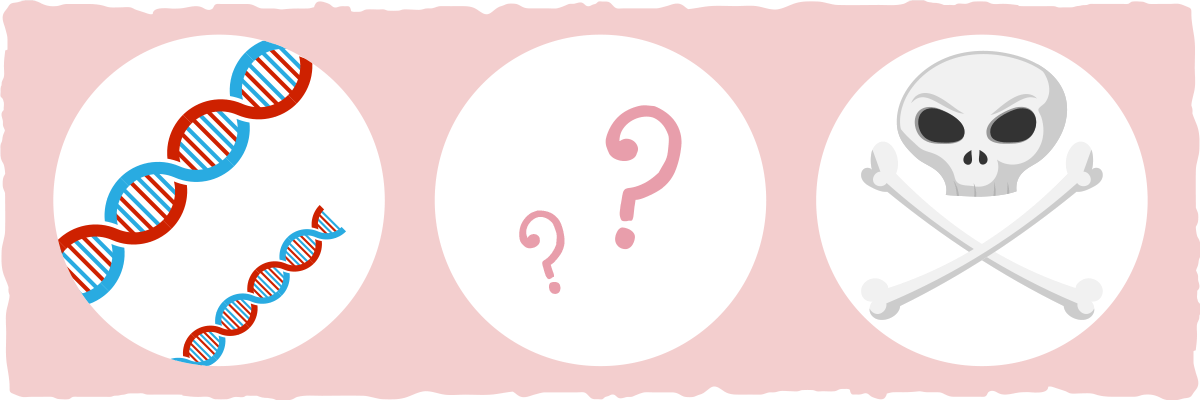
After decades of research, we now know for sure that there is not one cause of autism — there are many. Researchers suggest that autism develops from a combination of genetic and nongenetic, or environmental, influences that lead to abnormalities in brain structure or function.
These influences appear to increase the risk that a child will develop autism. However, it’s important to keep in mind that these factors are known to increase the risk, but not actually cause the disorder. For example, some gene variations associated with autism can also be found in people who don’t have the disorder at all.
Similarly, not everyone exposed to an environmental risk factor for autism will develop the disorder. In fact, most will not. On the other hand, if multiple factors affect the same child, then they are much more likely to develop autism spectrum disorder. Below is a list of factors that researchers have found to increase the risk of autism:
The Genetic Risks For Autism
Research tells us that autism-related genes variations tend to run in families. If a parent carries one or more of these genes, they may get passed to a child (even if the parent does not have autism).
For example, autism tends to occur more frequently than expected among individuals who have certain gene-related medical conditions like fragile X syndrome, tuberous sclerosis, congenital rubella syndrome and untreated phenylketonuria (PKU).
Genetic changes that increase the risk of autism can also arise spontaneously in an early embryo or the sperm and/or egg that combine to create the embryo. One potential cause of these changes is the ingestion of harmful substances during conception or pregnancy.
However, keep in mind that the majority of these genetic risk factors do not cause autism by themselves — they simply increase the chances of the child developing symptoms of autism spectrum disorder. Other factors, like environmental factors, may work together with these genetic changes to bring about the disorder.
The Environmental Risk Factors of Autism
Plenty of research indicates that specific environmental influences can further increase – or reduce – autism risk in people who are genetically predisposed to the disorder.
Some environmental factors that increase the risk of autism spectrum disorder are:
- Conceiving the child while either parent is advanced in age
- Pregnancy and birth complications (e.g., extreme prematurity [before 26 weeks], low birth weight, multiple pregnancies [twin, triplet, etc.])
- Pregnancies spaced less than one year apart
- Chronic maternal stressors during pregnancy
- Vitamin D and folate deficiency during pregnancy
- Having certain bacterial or viral infections during pregnancy
- Excess exposure to heavy metals, pesticides, and other environmental chemicals
- Taking specific drugs during pregnancy like Valproic acid, Thalidomide, and Misoprostol
Environmental factors that decrease the risk of autism:
- Taking prenatal vitamins containing folic acid and vitamin D3, before and at conception and through pregnancy
Environmental that have no risk (despite the controversy):
- Vaccines. Below you will find a quote from the Autism Speaks Organization regarding this heated topic:
Each family has a unique experience with an autism diagnosis, and for some, it corresponds with the timing of their child’s vaccinations. At the same time, scientists have conducted extensive research over the last two decades to determine whether there is any link between childhood vaccinations and autism. The results of this research is clear: Vaccines do not cause autism. The American Academy of Pediatrics has compiled a comprehensive list of this research. You can view and download the list here.
Genetic + Environmental Factors = Differences in the Brain and Gastrointestinal Tract That May Cause Autism
How do these genetic and nongenetic influences give rise to autism?
Here what research has found so far:
- Crucial aspects of early brain development can be impacted by these factors, resulting in deleterious changes in how brain nerve cells, or neurons, communicate with each other.
- Some factors appear to affect how entire regions of the brain communicate with each other.
- A combination of factors has been shown to cause defects in mitochondrial function, including mitochondrial respiratory chain disorders and problems with burning fat for fuel.
- Many of the factors have a substantial impact on the gut-brain connection. This can cause gut issues that drive behavioral problems.
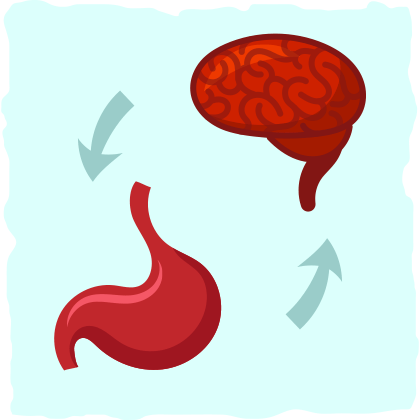
Although these issues don’t occur in every child that is affected by autism spectrum disorder, these seem to be the most common.
Research has already been addressing these potential causes with various approaches including supplements, diets, and medications, and the results have been inconclusive and quite confusing. However, some studies have shown promise for specific ways of eating and natural supplements in the treatment of autism, especially ketone boosting supplements and the ketogenic diet.
The Ketogenic Diet as a Treatment for Autism Spectrum Disorder
Many studies on mice that exhibit similar behaviors as humans with autism have provided us with promising results. In these studies, researchers found that the ketogenic diet can improve and even reverse autism-like behaviors in mice.
Is the same effect reported in children with autism? Let’s find out.
In a pilot study of 30 children with autism, the participants were placed on a ketogenic diet for six months. The diet specifically consisted of 30% medium chain triglyceride oil (a ketone level boosting saturated fat), 30% fresh cream, 11% saturated fat, 19% carbohydrates, and 10% protein along with vitamin and mineral supplements. Although this wasn’t a very strict ketogenic diet, the children that stuck to the diet were able to get into ketosis.

23 of the 30 children tolerated the diet beyond the initial four weeks, and of those, five more discontinued the diet due to lack of improvement. Of the remaining 18 kids, two boys improved enough in symptoms to be taken out of special education classes and placed in mainstream education.
Overall, the 18 children that stuck to the ketogenic diet “presented with improvements in their social behavior and interactions, speech, cooperation, stereotypy [repetitive movements or utterances], and… hyperactivity, which contributed significantly to their improvement in learning.”
These are incredible results, but the most surprising finding of the study is that the children maintained their improvements when they went back to their regular diet.
However, the results weren’t positive for every child in the study. Children with the most severe cases of autism, for example, didn’t stick to the diet nor did they see any improvement. The benefits were only seen in children with milder cases of autism.
Another drawback of the study is that it wasn’t randomized or controlled, so the results should be taken with a huge grain of salt. To get a more realistic picture of how effective the ketogenic diet truly is for people with autism, we must consult a recent meta-analysis of all of the studies on the subject.
In a recent meta-analysis, two independent reviewers investigated the relationship between autism spectrum disorder and the ketogenic diet in humans and experimental studies. The reviewers found three studies with animals and five studies with humans that met their inclusion criteria. After analyzing the data from these studies, the researchers concluded that:
The limited number of reports of improvements after treatment with the KD [ketogenic diet] is insufficient to attest to the practicability of the KD as a treatment for ASD [autism spectrum disorder], but it is still a good indicator that this diet is a promising therapeutic option for this disorder.
In other words, there is not enough evidence to support the ketogenic diet as a being a treatment for autism, but it is a promising option. In fact, it may be the most promising dietary option out of the diets that have been studied.
The Ketogenic Diet Vs. Other Diets in The Treatment of Autism
Many diet regimens were studied in the treatment of patients with autism spectrum disorder over the past few years, but the ketogenic diet is the most promising (especially since it can benefit other neurological disorders like epilepsy and Alzheimer’s disease).
Another diet that has garnered the interest of researchers is the gluten-free casein-free diet. The popularity of this diet as a potential treatment of autism stems from research that suggests that the smaller components of gluten and casein may have a role in the origins of autism. More specifically, some of the smaller parts of gluten and casein proteins have been known to cause excessive opioid activity, which might explain the physiology and psychology of autism.
Both diets have promising hypotheses behind them (and inconclusive evidence supporting them), but which one is most effective in the treatment of autism? A recent study sought out to find the answer.
In this study, 45 children with autism were equally divided into three groups. The first group received a ketogenic diet type diet called the modified Atkins diet, the second group received a gluten-free casein-free diet, and the third group received balanced nutrition and served as the control group.
Both diet groups showed significant improvement in various autism-related tests in comparison to control group, yet the ketogenic diet group scored better results in cognition and sociability compared to the gluten-free casein-free diet group.
The study clearly answers the question of which diet is better for autism, but the differences between them and their proposed benefits indicate that they might be even more effective when combined together.
The Gluten-free Casein-free Ketogenic Diet As a Treatment for Autism: A Case Study
After digging through the research, there is only one study on the effect of combining the two diets (that I could find), and it is a case study.
Although this is only a bit better than anecdotal evidence, this still provides us with an idea of what the combination of the two diets can do for people with autism.
In the case study, a gluten-free casein-free modified Ketogenic diet (1.5:1 fat:non-fat ratio; lipids mainly consisting of medium-chain and polyunsaturated fats) was followed for 14-months by a 12-year-old child with autism spectrum disorder, seizures, and a family history of metabolic and immune disturbances.
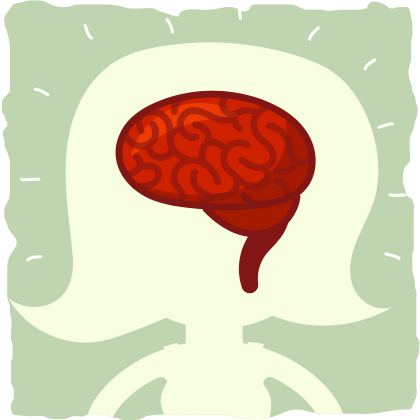
While following the diet, the child experienced improvements in seizure activity, brain function, cognitive and social skills, language function, and complete resolution of stereotypies (repetitive movements or utterances). Anticonvulsant medication dosages were reduced without worsening the seizures as well.
Although these results are pretty spectacular, there are some confounding variables to take note of. The diet was accompanied by a wealth of medications, significant weight loss, and transitioning to puberty, so it is difficult to assess exactly what role this diet played.
When we look deeper into the effects that weight loss, puberty, and the medications the child was taking have on the body, we can assume that these likely have little to do with the positive results. It is much more likely that the gluten-free casein-free modified ketogenic diet is to blame for the reversal of many of the child’s symptoms.
How Does The Gluten-free Casein-free Modified Ketogenic Diet Help With Autism
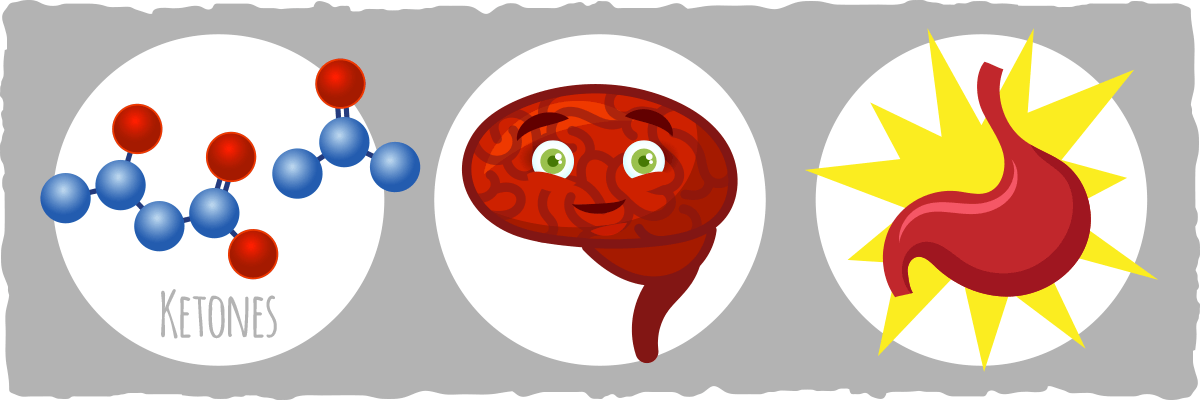
The positive results of the studies that we explored throughout this article can be explained by a couple of well-known mechanisms. First, by eliminating gluten and casein from the diet, you completely abolish a potential cause of autism-like symptoms from the body.
On the other hand, the superior results that the ketogenic diet has over other diets are most likely caused by two factors. The first factor is that brain cells function more efficiently when they use ketones for fuel rather than sugar. Secondly, ketones have an inhibitory effect on nerve cells. What happens when you make a hyper-excitable nervous system more efficient and less active? Less autism-like behaviors and symptoms.
More specifically, by burning ketones for fuel, the autistic child will be able to bypass many of the mitochondrial and neuronal issues that are causing his or her brain to malfunction. The ketones also act as a neuroprotective antioxidant, which improves brain function for almost everyone, especially those with autism.
Furthermore, the increase of ketone bodies in the brain maintains GABA (a regulatory neurotransmitter) at a higher level — a phenomenon that may contribute to the beneficial effect of a ketogenic diet in children with epilepsy and perhaps children with autistic behavior.
The gluten-free casein-free modified ketogenic diet, as well as the standard ketogenic diet, have a tremendous impact on the gut microbiome and gut health as well, which has been found to play a significant role in autism. By eating the whole, low-carb foods that are commonly consumed on the ketogenic diet, the microbiome changes in a way that can promote gut health, which has numerous benefits for the brain.
Key Takeaway: the gluten-free casein-free modified ketogenic diet might be the best diet for some children with autism. Here’s why:
- It eliminates gluten and casein, which may cause autism-like symptoms.
- It promotes using ketones for fuel, which improves brain function in many ways that are impacted by autism.
- It helps calm the overactive nervous system that most children with autism have.
- It improves gut health, which has a tremendously positive impact on behavior and brain health.
Considerations for Putting A Child with Autism on a Ketogenic Diet
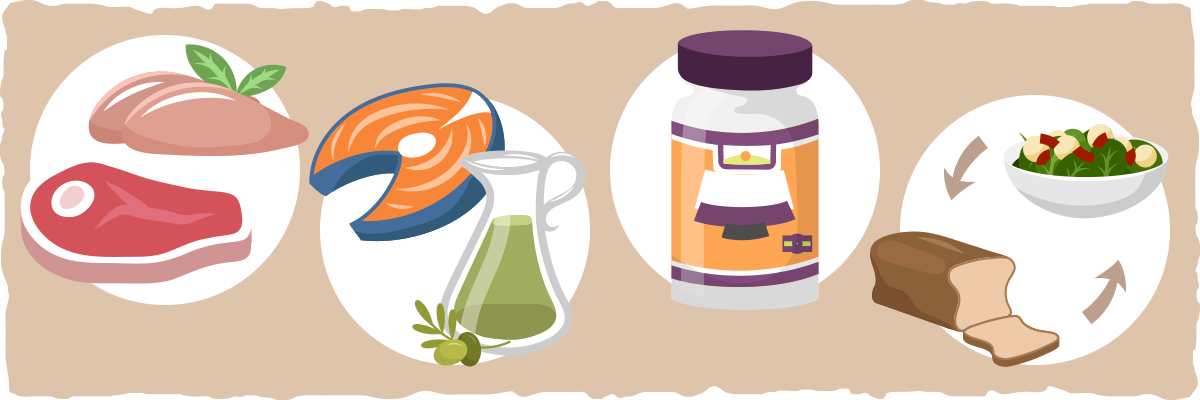
There are many things to be aware of when implementing the ketogenic diet for an autistic child. Here are some suggestions:
- Make sure the child is getting adequate protein and calories from whole foods. If the child is not eating enough protein and other nutrients, they will lose weight and stop growing. You can use our keto calculator to get a relatively accurate estimate of the child’s macronutrient needs.
- Limit the consumption of long-chain saturated fats. Some children with autism may have genetic defects that affect their ability to burn fat for fuel directly. For this reason, many of these children should consume a diet that consists primarily of short-chain and medium-chain saturated fatty acids and unsaturated fatty acids. Medium chain saturated fatty acids, in particular, are especially helpful because they are converted into ketones directly in the liver, which provides the autistic brain with the alternative fuel source that it needs.
- Supplement with carnitine, coenzyme Q10, thiamine, and lipoic acid. These compounds can provide the cells with nutrients they need to bypass the mitochondrial issues that are experienced by many children with autism.
- Try implementing a variation of the cyclical ketogenic diet. Research suggests that the child with autism doesn’t have to be on the ketogenic diet for the rest of his or her life. Many of the benefits of the ketogenic diet will carry on for weeks to months after the diet has been stopped. For this reason, consider trying a variation of the cyclical ketogenic diet where the ketogenic diet is followed for weeks to months and carbs are then slowly introduced back into the child’s diet. If the symptoms get worse after the reintroduction of carbs, then start reducing carbs until the child feels better.
This list only contains the most important considerations that I could think of and find at the moment, so make sure you consult with your doctor and any other relevant health professionals before making such a significant dietary change.
Practical Takeaway: The Ideal Diet for a Child with Autism
Due to the inconsistent results and the complexity of the disease, it is difficult to say if the ketogenic diet or ketone supplements will help all children with autism. However, this doesn’t mean that it won’t help some people with autism. In fact, it may even help (in some way) most children that are affected by autism.
To apply the information found in this article to your life, consider trying a ketone boosting supplement like MCTs, coconut oil, ketone salts, or ketone esters. If the increase in ketone levels improves symptoms and doesn’t cause any issues, then start transitioning to the full-blown ketogenic diet to get even more benefits.
With that being said, some studies suggest that people with autism may also respond to a gluten free and casein free diet. Although the evidence for this approach is inconclusive (like the evidence for the ketogenic diet), eliminating gluten and casein from the diet may provide some symptom improvement, while consuming them may make the disorder worse.
Unfortunately, a prominent staple of the ketogenic diet is dairy (e.g., cheese, sour cream, heavy cream, etc.), which contains casein. However, this does not mean that you must choose one diet or the other. There are plenty of dairy replacements that you can use to create your own casein-free gluten-free ketogenic diet.
To learn the basics of how to start the ketogenic diet, read through our beginner’s guide. Once you understand the basics of keto, you can learn how to convert it into a casein-free gluten-free ketogenic diet by using the dairy alternatives that you’ll find in our guide to the vegan ketogenic diet.
Sources:
- Ketogenic diet improves behaviors in a maternal immune activation model of autism spectrum disorder — NCBI
- Potential Therapeutic Use of the Ketogenic Diet in Autism Spectrum Disorders — NCBI
- Autism — American Speech-Language-Hearing Association
- Causes & Factors — Autism Society
- What causes autism? — Autism Speaks
- Autism and Ketogenic Diets — Psychology Today
- Ketogenic diet versus gluten free casein free diet in autistic children: a case-control study. — NCBI
- Effect of a ketogenic diet on autism spectrum disorder: A systematic review — Science Direct
- Application of a Ketogenic Diet in Children With Autistic Behavior: Pilot Study — Journal of Child Neurology
- Mitochondrial dysfunction in autism spectrum disorders: a population-based study — Developmental Medicine and Child Neurology
- Is autism a disorder of fatty acid metabolism? Possible dysfunction of mitochondrial β-oxidation by long chain acyl-CoA dehydrogenase — Science Direct
- Very Long Chain Acyl CoA Dehydrogenase Deficiency (LCAD) — National Organization for Rare Disorders
- Gluten and casein-free diets for autism spectrum disorder — Cochrane
- Can a Ketogenic Diet Help Autism — Robb Wolf
- Autism Cases on the Rise; Reason for Increase a Mystery — WebMD
- Short-chain fatty acid fermentation products of the gut microbiome: implications in autism spectrum disorders — NCBI
- Autism and dietary therapy: case report and review of the literature. — NCBI
- Environmental risk factors for autism — NCBI
- Advanced parental age and the risk of autism spectrum disorder. — NCBI
- Closely spaced pregnancies are associated with increased odds of autism in California sibling births. — NCBI
- Prenatal vitamins, one-carbon metabolism gene variants, and risk for autism. — NCBI